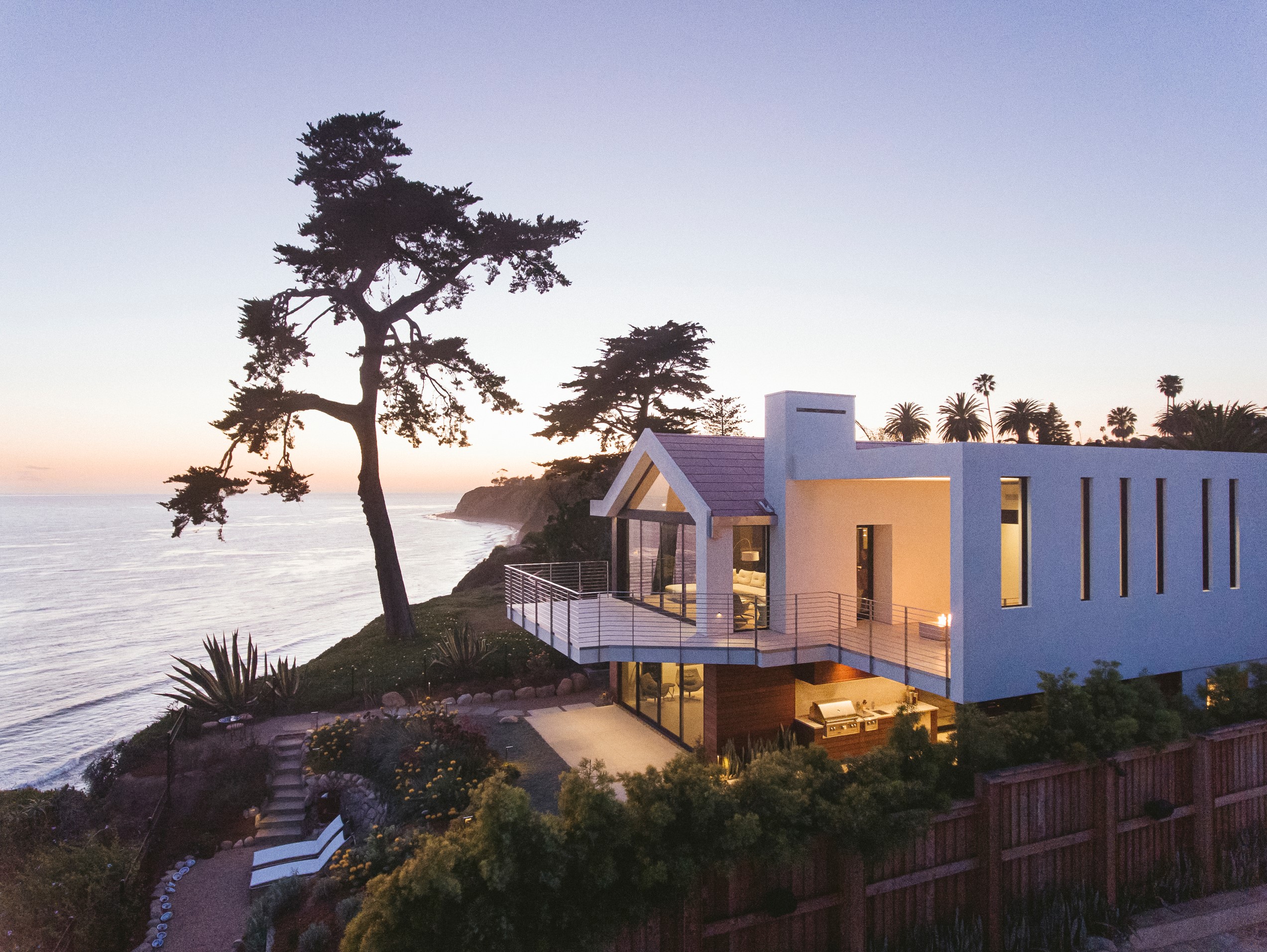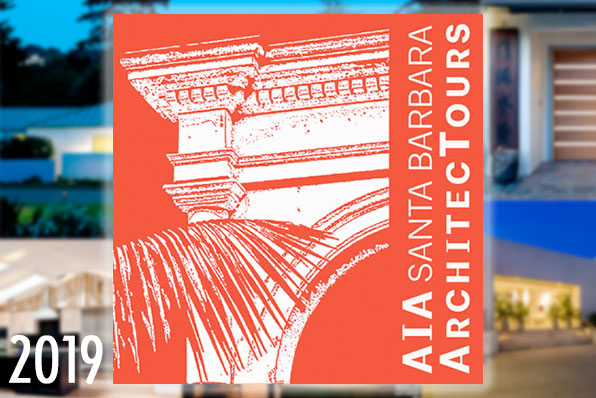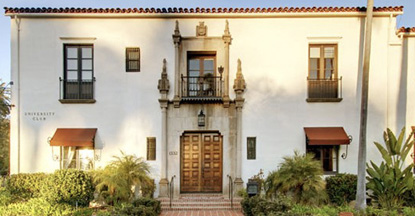AIA Santa Barbara ArchitecTours
Every year, on the first Saturday in October, AIA Santa Barbara hosts ArchitecTours. ArchitecTours is a celebration of local architecture and cultural identity. The seven sites on the tour are a combination of commercial and residential projects showcasing historic structures that have withstood the test of time balanced by contemporary buildings strongly rooted in the community. The event also underlines the depth of knowledge and expertise of AIA architects in urban design, sustainability, accessibility, structural improvements, building materials, and historic renovation. Making architecture more accessible to the public, the tour offers a rare opportunity for a behind-the-scenes look at these exceptional properties. Tour participants will observe first-hand how architects transform ordinary spaces into customized environments using a variety of design solutions.
ArchitecTours is a self-guided tour, followed by a fun party.
Below are the projects on 2016 ArchitecTours.
Jorgensen Ranch House
John Ward Pittman, 1955-1957
Paul Poirier Architects, 2016

Originally built between 1955 and 1957, this one-story adobe historic structure was the first residence designed by John Ward Pitman, 10 years before receiving his architect’s license. Many of its adobe bricks were made on site and the mission tile roof was salvaged from a re-roof of the Cold Springs School. In December 2009, due to “its adobe construction and styling” and that it was the “work of a significant local architect,” the house was declared a City of Santa Barbara Structure of Merit. The current owners purchased the adobe in 2011 and have expanded the master suite and remodeled the kitchen and bathrooms.
Their master suite addition blends with the existing building from the details to the connection with the existing roofline. A ground mounted photovoltaic solar array was also added, making this a zero net energy home. The landscape has been transformed into intimate gardens and terraced planting pockets with fire-resistive and water-wise plant material salvaged from other areas of the site.
Santa Barbara Center for Art, Science and Technology (SBCAST)
Macy Architecture with local support from Winick Architects

The Santa Barbara Center for Art, Science and Technology (SBCAST), completed in 2016 and designed by Macy Architecture with local support from Winick Architects, is a vibrant shared creative environment to promote thought and action. The center has an educational and community outreach mandate to further public understanding and enjoyment of the arts in a creative, accessible and engaging setting. In addition to a variety of community spaces and shared, state-of-the-art workshop facilities, SBCAST includes an affordable-by-design housing component for seven permanent residents and two visiting collaborators. Resource efficient, SBCAST was constructed using advanced framing techniques, designed according to sustainable design principles. SBCAST generates electricity on site, distributes solar thermal heating, and collects rainwater for its multi-level gardens.
Santa Barbara County Courthouse
William Mooser and Company, 1929
Robert Ooley, Santa Barbara County Architect

The Santa Barbara Courthouse, a designated City, State and National Historic Landmark, is the most globally recognized building in the City, and possibly the State. Today, historic conservation, preservation and restoration are on-going.
The Courthouse came about following the earthquake of June 29, 1925. While much of the downtown area and the region were devastated, the city leadership saw an opportunity to re-invent the civic identity. Within a year the entire downtown converted from Victorian era vernacular to Spanish Colonial Revival. The new courthouse complex was designed to be the heart of this new identity as well as the new center of community life – the hub of government and backdrop to civic celebrations. It remains so today.
Designed by William Mooser and Company and completed in 1929, the one to seven story building houses a total of 160,000 square feet of floor space including offices, courts and a jail. While the construction was completed within three years, the exterior gives one the impression that it was developed over decades, maybe even a century of time, as the architectural detailing changes with each building that comprises the complex.
The Braille Institute
The Cearnal Collective

Designed as a one and two story traditional style plan, this new building and entry courtyard were carefully located to preserve the existing 100′ tall Canary Island pine tree and gracious landscaped front yard that have defined the Braille Institute’s front entry since they started serving Santa Barbara in 1981. The graceful trellised entry, rotunda lobby and elevator tower have become a timeless community treasure. The beautiful courtyard exhibits good design with an emphasis on function, and is safely accessible to both visually impaired and blind clientele. The enclosed courtyard acts as a traditional design element and creates a safe enclosed space with a perimeter walkway for students to practice maneuvering in public space. Design elements in the courtyard, such as brick walls with sandstone bands at regular intervals, provide design interest but also aid navigation by providing texture and contrast for the students to use for way finding. The center fountain serves as an orienting sound for the students as well as a delightful courtyard feature. Tour participants will experience these unique elements firsthand!
Inside-Out Art Department and Physics/Math/Psychology Hall (Westmont)
Design Architect: Blackbird Architects / Collaborating Architect: David Van Hoy / Executive Architect: Pfeiffer Partners

Winter Hall and Adams Center for the Arts build physical, cultural and spiritual links between the campus past, present, and future. As the first steps within a LEED for Campus masterplan, the new academic hubs interact with sloping landscapes, creating connections while fostering campus universal access. Long-used, sitewide networks between path and place flow through, and shape, these LEED Gold buildings into active outdoor areas and create much needed academic spaces.
Winter Hall houses the departments of Physics, Mathematics & Computer Science, and Psychology. A dynamic, sky lit interior atrium organizes the departments, provides access to light, and fosters interdisciplinary interactions. The Adams Center for the Arts houses the Art Department, Art Museum, fine arts studios, and lecture spaces. The studios connect to outdoor garden terrace workspaces, with glazed hangar doors opening entire walls to light, air, and passersby – fostering college-wide social and interdisciplinary connections.
The Contextual Contortionist
Shubin + Donaldson Architects

This 2,500 square foot, three story home sits on a narrow, wedge-shaped, hilltop site with 270° ocean and mountain views. The owner is an industrial designer intent on creating a home consistent with his design values: modern, functional and efficient, yet comfortable for a young family with two children. The desire was to create a home with a limited palette of materials, utilizing concrete, steel, glass and wood. The main design challenge was to “wedge” this building into a narrow complex shape based on the constraints and opportunities provided by the hillside parcel, zoning requirements, and neighborhood context. This energy conscious home provides high efficiency radiant floor heating, custom LED lighting throughout, and natural day lighting. A three story central stairwell opens all the way to the basement to allow light to pass deep within the building, promoting natural air ventilation from the basement up to the top of the home.
The Moderne Mill
AB design studio, inc.

The Mill, at Laguna and Haley, is one of the most talked about commercial properties in Santa Barbara, offering tourists and locals an environment in which to enjoy a variety of urban amenities. The 22,000 square-foot, $12 million culinary and art venue in Santa Barbara came to fruition after years of collaborative planning and design. Similar to the urbanization of the Funk Zone, The Mill is an extension that connects patrons with some of the county’s best chefs, vintners and artisans.
The designers have carefully crafted an adaptive re-use approach that preserves the integrity of the structure originally constructed in the early 1900’s, while reconditioning the space to modern day requirements. The new development has an industrial rustic aesthetic with barnlike features intended to reflect the region’s agricultural traditions. The Mill successfully embodies existing, soulful components, such as the rusty roof and trusses, and seamlessly integrates them with other architectural components and a more contemporary landscape design.




